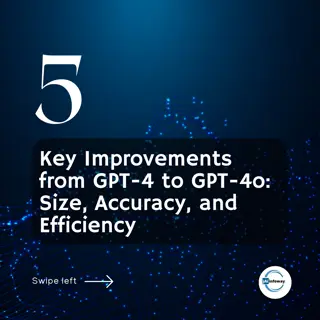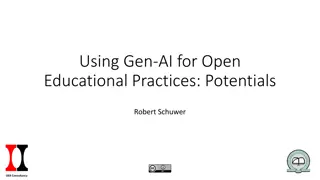
Understanding Random Number Generation Techniques in Computer Systems Performance Analysis
Explore the world of random number generation in computer systems performance analysis, covering topics like generating random values, background methods, basic terms, cycle length, choosing seeds and functions, types of generators, and more. Learn about linear-congruential generators and other popular methods used in the field.
Download Presentation

Please find below an Image/Link to download the presentation.
The content on the website is provided AS IS for your information and personal use only. It may not be sold, licensed, or shared on other websites without obtaining consent from the author. If you encounter any issues during the download, it is possible that the publisher has removed the file from their server.
You are allowed to download the files provided on this website for personal or commercial use, subject to the condition that they are used lawfully. All files are the property of their respective owners.
The content on the website is provided AS IS for your information and personal use only. It may not be sold, licensed, or shared on other websites without obtaining consent from the author.
E N D
Presentation Transcript
Random-Number Generation Andy Wang CIS 5105 Computer Systems Performance Analysis
Generate Random Values Two steps Random-number generation Get a sequence of random numbers distributed uniformly between 0 and 1 Random-variate generation Transform the sequence to produce random values satisfying the desired distribution 2
Background The most common method Use a recursive function xn = f(xn-1, xn-2, ) 3
Example xn = (5xn-1 + 1) %16 Suppose x0 = 5 The first 32 numbers are between 0 and 15 Divide xn by 15 to get numbers between 0 and 1 16 1 0.9 14 0.8 12 0.7 10 0.6 Random number Random number 8 0.5 0.4 6 0.3 4 0.2 2 0.1 0 0 0 10 20 30 40 0 10 20 30 40 Nth number Nth number 4
Basic Terms x0 = seed Given a function, the entire sequence can be regenerated with x0 Generated numbers are pseudo random Deterministic Can pass statistical tests for randomness Preferred to fully random numbers so that simulated results can be repeated 5
Cycle Length Note that starting with the 17th number, the sequence repeats Cycle length of 16 1 0.9 0.8 0.7 0.6 Random number 0.5 0.4 0.3 0.2 0.1 0 0 10 20 30 40 Nth number 6
More Terms Some generators do not repeat the initial part (tail) of the sequence Period of a generator = tail + cycle length tail cycle length period 7
Question How to choose seeds and random- number generation functions? 1. Efficiently computable Heavily used in simulations 2. The period should be large 3. Successive values should be independent and uniformly distributed 8
Types of Random-Number Generators Linear-congruential generators Tausworth generators Extended Fibonacci generators Combined generators Others 9
Linear-Congruential Generators In 1951, Lehmer found residues of successive powers of a number have good randomness properties xn = an % m = aan-1 % m = axn-1 % m Lehmer s choices of a and m a = 23 (multiplier) m = 108 + 1 (modulus) Implemented on ENIAC 10
(Mixed) Linear-Congruential Generators (LCG) xn = (axn-1 + b) % m xn is between 0 and m 1 a and b are non-negative integers Mixed using both multiplication by a and addition by b 11
The Choice of a, b, and m m should be large Period is never longer than m To compute % m efficiently Make m = 2k Just truncate the result by k bits 12
The Choice of a, b, and m If b > 0, maximum period m is obtained when m = 2k a = 4c + 1 b is odd c, b, and k are positive integers 13
Full-Period Generators Generators with maximum possible periods Not equally good Look for low autocorrelations between successive numbers xn = ((234 + 1)xn-1 + 1) % 235 has an autocorrelation of 0.25 xn = ((218 + 1)xn-1 + 1) % 235 has an autocorrelation of 2-18 14
Multiplicative LCG xn = axn-1 % m, b = 0 Can compute more efficiently when m = 2k However, maximum period is only 2k-2 Problem: Cyclic patterns with lower bits 15
Multiplicative LCG with m = 2k When a = 8i 3 E.g., xn = 5xn-1 % 25 Period is only 8 Which is of 25 When a 8i 3 E.g., xn = 7xn-1 % 25 Period is only 4 30 30 25 25 20 20 Random number Random number 15 15 10 10 5 5 0 0 0 10 20 30 40 0 10 20 30 40 Nth number Nth number 16
Multiplicative LCG with m 2k To get a longer period, use m = prime number With proper choice of a, it is possible to get a period of m 1 a needs to be a prime root of m If and only if an% m 1 for n = 1..m - 2 17
Prime Root Example 3 is a prime root of 7 31 % 7 = 3 % 7 = 3 32 % 7 = 9 % 7 = 2 33 % 7 = 27 % 7 = 6 34 % 7 = 81 % 7 = 4 35 % 7 = 243 % 7 = 5 36 % 7 = 729 % 7 = 1 37 % 7 = 2187 % 7 = 3 Goes through 7 1 numbers before repeating 18
Multiplicative LCG with m 2k xn = 3xn-1 % 31 x0 = 1 Period is 30 3 is a prime root of 31 30 25 Random number 20 15 10 5 0 0 10 20 30 40 Nth number 19
Multiplicative LCG with m 2k xn = 75xn-1 % (231 1) 75 is a prime root of 231 1 But watch out for computational errors Multiplication overflow Need to check for the largest x supported See p.443 for working code Truncation due to the number of digits available 20
Tausworthe Generations How to generate large random numbers? The Tausworthe generator produces a random sequence of binary digits The generator then divides the sequence into strings of desired lengths Based on a characteristic polynomial 21
Tausworthe Example Suppose we use the following characteristic polynomial x7 + x3 + 1 The corresponding generation function is bn+7 bn+3 bn = 0 Or bn = bn-4 bn-7 Need a 7-bit seed 22
Tausworthe Example The bit stream sequence 1111111000011101111001011001 . Convert to random numbers between 0 and 1, with 8-bit numbers x0 = 0.111111102 = 0.9921910 x1 = 0.000111012 = 0.1132810 x2 = 0.111001012 = 0.8945310 23
Tausworthe Generator Characteristics For the L-bit numbers generated +E[xn] = +V[xn] = 1/12 +The serial correlation is zero + Good results over the complete cycle - Poor local behavior within a sequence 24
Tausworthe Example If a characteristic polynomial of order q has a period of 2q 1, it is a primitive polynomial For x7 + x3 + 1 q = 7 Sequence repeats after 127 bits = 27 - 1 A primitive polynomial 25
Tausworthe Implementation Can be easily generated via linear- feedback shift-registers For x5 + x3 + 1 bn bn-1 bn-2 bn-3 bn-4 bn-5 26
Extended Fibonacci Generators xn = (xn-1 + xn-2) % m Does not have good randomness properties High serial correlation An extension xn = (xn-5 + xn-17) % 2k 27
Combined Generations Add random numbers by two or more generators Can considerably increase the period and randomness xn = 40014xn-1 % 2147483563 yn = 40692yn-1 % 2147483399 wn = (xn - yn) % 2147483562 This generator has a period of 2.3 x 1018 28
Combined Generators wn = 157wn-1 % 32363 xn = 146xn-1 % 31727 yn = 142yn-1 % 31657 vn = (wn - xn + yn) % 32362 This generator has a period of 8.1 x 1012 Can avoid the multiplication overflow problem 29
Combined Generators XOR random numbers by two or more generators 30
Combined Generators Shuffle One sequence as an index To an array filled with random numbers generated by the second sequence The chosen number in the second sequence is replaced by a new random number Problem Cannot skip to the nth random number 31
A Survey of Random- number Generators Some published generator functions xn = 75xn-1 % (231 1) Full period of 231 2 Low-order bits are randomly distributed Many others (see textbook) All have problems General lessons: Use established ones; Do not invent your own 32
Seed Selection If the generator has a full period Only one random variable is required Any seed value is good However, with more than one random variable, the story is different for multistream simulations E.g., random arrival and service times Should use two streams of random numbers 33
Seed Selection Guidelines Do not use zero Not good for multiplicative LCGs and Tausworthe generators Avoid even values Not good if a generator does not have a full period Do not use one stream for all variables May yield strong correlations among variables 34
Seed Selection Guidelines Use nonoverlapping streams Each stream requires a separate seed Otherwise A long interarrival time may correlate with a long service time Suppose we need 10,000 random numbers for interarrival times; 10,000 for service times, use seeds 1 and 10,001 xn = [anx0 + c(an 1)/(a 1)] % m For multiplicative LCGs, c = 0 35
Seed Selection Guidelines Not to reuse seeds in successive simulation runs No point to run a simulation again with the same seed Just continue with the last random number as the seed for the successive runs 36
Seed Selection Guidelines Do not use random random-number generator seeds E.g., do not use the time of day, or /dev/random to seed simulations Simulations should be repeatable Cannot guarantee that multiple streams will not overlap Do not use numbers generated by random-number generators as seeds 37
Myths About Random- number Generation A complex set of operations leads to random results Hard to guess does not mean random Random numbers are not predictable Given a few successive numbers from an LCG Can solve a, c, and m Not suitable for cryptographic applications 38
Myths about Random- number Generation Some seeds are better than others True Avoid generators whose period and randomness depend on the seed Accurate implementation is not important Watch out for overflows and truncations 39
Myths about Random- number Generation Bits of successive words generated by a random-number generator are equally randomly distributed Nope 40
Myths about Random- number Generation xn = (25173xn-1 + 13849) % 216 x0 = 1 Least significant bit is always 1 Bit 2 is always 0 Bit 3 has a cycle of 2 Bit 4 has a cycle of 4 Bit 5 has a cycle of 8 n 1 2 3 4 5 6 7 decimal 25173 12345 54509 27825 55493 25449 13277 binary 01100010 00110000 11010100 01101100 11011000 01100011 00110011 01010101 00111001 11101101 10110001 11000101 01101001 11011101 41
Myths about Random- number Generation For all multiplicative LCGs The Lth bit has a period that is at most 2L For LCGs, with the form xn = axn-1 % 2k The least significant bit is either always 0 or always 1 High-order bits are more random 42
More on Random Number Generations Mersenne twister Period =~ 219937-1 /dev/random Extract randomness from physical devices Truly random 43
White Slide 44






















